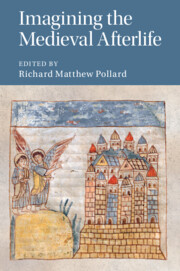Book contents
- Imagining the Medieval Afterlife
- Cambridge Studies in Medieval Literature
- Imagining the Medieval Afterlife
- Copyright page
- Contents
- Figures
- Contributors
- Preface and Acknowledgements
- Abbreviations
- Imagining the Medieval Afterlife: Introduction
- Part I Chronological Surveys
- Part II Theological Perspectives
- Part III Artistic Impressions
- Part IV Notable Authors and Texts
- Chapter 12 Visions and the Afterlife in Gregory’s Dialogues
- Chapter 13 The Vision of Tnugdal
- Chapter 14 The Afterlife in the Visionary Experiences of the Female Mystics
- Chapter 15 Dante’s Other-Worldly Surprises and This-Worldly Polemic
- Bibliography
- Index
- Cambridge Studies in Medieval Literature
Chapter 12 - Visions and the Afterlife in Gregory’s Dialogues
from Part IV - Notable Authors and Texts
Published online by Cambridge University Press: 07 December 2020
- Imagining the Medieval Afterlife
- Cambridge Studies in Medieval Literature
- Imagining the Medieval Afterlife
- Copyright page
- Contents
- Figures
- Contributors
- Preface and Acknowledgements
- Abbreviations
- Imagining the Medieval Afterlife: Introduction
- Part I Chronological Surveys
- Part II Theological Perspectives
- Part III Artistic Impressions
- Part IV Notable Authors and Texts
- Chapter 12 Visions and the Afterlife in Gregory’s Dialogues
- Chapter 13 The Vision of Tnugdal
- Chapter 14 The Afterlife in the Visionary Experiences of the Female Mystics
- Chapter 15 Dante’s Other-Worldly Surprises and This-Worldly Polemic
- Bibliography
- Index
- Cambridge Studies in Medieval Literature
Summary
This chapter discusses Pope Gregory the Great’s ideas about visions and the afterlife, and how they were received in the early middle ages. To provide a fuller picture of Gregory’s ideas about afterlife visions, the chapter discusses his thought more generally about visions and dreams, especially the two main themes of this thought: the nature of dreams and visions, as ways through which invisible realities might be perceived; and the nature of afterlife visions, especially whether they represented the afterlife allegorically or as it was. The reception of Gregory’s ideas was influenced by the existing tradition of narrating afterlife visions and the way his works were excerpted and abbreviated to suit new needs. This process made Gregory known both as a proponent of the reality of visions and the author of a teaching critical of dreams, and his Dialogues an influential source of imagery for afterlife visions.
- Type
- Chapter
- Information
- Imagining the Medieval Afterlife , pp. 225 - 246Publisher: Cambridge University PressPrint publication year: 2020

